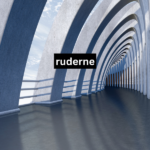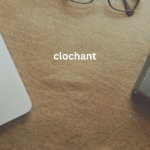In web design, every pixel is crucial especially the ones that involve overlay panels! If you want to take your user interface a notch higher and improve the overall experience, modifying your overlay panel is the best way to go about it. In this blog post, we will be looking into the relations on how you can effectively alter the background color and arrow style of your overlay panel, bisectional border radius inclusive to perfect bottom round edges. Whether you want a huge blow to yell or a soft tea of a charming feeling, understandable these are simple changes which will create a distinction between our overlays, and the aspect of – scoring out. It’s time to make those dull panels into pieces which will not only serve their purpose but look amazing doing so!
Overview of overlay Opanel component
Every detail counts when it comes to creating a visually appealing web based application. The OverlayPanel is one of the components that is often overlooked. This elastic and efficient read-only UI can greatly improve user interaction by contextually offering relevant content without polluting the main screen. The only problem with this is that very soon every corporate site will be the same.
Altering the default features of your OverlayPanel further increases its usability and makes sure that it fits right with your design style. There’s so much you can do to brand this widget! Be it with regards to the background color change, or the arrow style alteration, there are so many things that you can do to personalize this component. No matter if its a subtle change or a bold one, these elements can be styled in such a way that a cohesive design is maintained but key elements like border radius are retained to give it that finished clean touch. Shall we proceed further on customization? Let us get on it!
Importance of each customization for design coherence
How such a process can help achieve design coherence and integration is by assertion of every component on the surface of a web application delivered in a consistent manner. Every component adheres to a common style which enhances the experience. If other similar things are present within the system, users will find it easier to move around.
Also, customization makes it easier for companies to remain true to their brand image. A unique appearance makes it easier for customers to differentiate you from the competition and to remember your company. In markets where competition is fierce and where impressions count, this is very important.
Further, usability is also improved through uniform design. When users come across components they are used to, they can hardly go wrong in predicting the actions to take. Such matters instill trust and encourage users to stick to your content or even your services.
Finally, customization expands interaction to every category of users. The interaction flow can be enhanced further, in particular, due to the changes in the color and the text properties. There is always a connection between the time spent customizing these aspects and the quality of the end product created for its intended audience.
Detailed description and steps on how to alter your background color and change the arrow style
Altering the background color of the arrow and overlay panel is very simple. First of all, get to know the CSS properties that you can use to control these aspects. The background-color property will be your main interest as it deals with the appearance of the panel.
In order to change the background color of your OverlayPanel, you have to find the appropriate CSS class in the stylesheet. Change the CSS to a different hex code or RGB value.
Then they go on to cover the customization of the arrow style next. If you want to get rid of arrow in overlaypanel primevue, use border styles creatively. Its width can be changed as well by adjusting margin.
While making those suite changes, do not forget the border radius rounded corners Maintained. A quick look on the various styling options strived for, will guide on how to make everything purchased according to the drawing design, while the functionality is not in any way compromised.
Doing an analysis of the style options available with the OverlayPanel
The design in PrimeVue not only emerges from its functionalities but also the OverlayPanel component comes along with diverse functionalities that strips all the flatness to the user interface.
When you get into these customization functions, you will see that it also provides for varying of the colors, borders and shadow effects. This kind of versatility enables you to conform the panel towards the design on your site itself.
One of the most time-effective features is its flexebility with regards to responsive design. You are free to design a captivating experience irrespective of the screen size used.
Knowing these options enables you, for example, to draw unique design combinations that embark on unusual ventures. Designing in a trial-and-error mode helps developers and designers to generate effective aesthetic solutions and overlays to attract the attention of users.
As you go through all settings in order to try out each of them you will understand that even the tiniest modifications can change the shape and the style of the applications in a good or a bad way.
Adjusting the shade of the overlay panel’s background
The enhancement of the background color of your OverlayPanel is bound to change the asthetics of the component by a wide margin thus increasing the spatial reach. It enables one to customize the component to fit into the designed component scheme.
Firstly determine the CSS class for that particular OverlayPanel. It is probably in the class of .p-overlaypanel. It is easy to add a special decoration, simply creating a new frame in which it will be written: background-color.
Pick colors that are in line with your brand identity or website theme. Do go for a rich color, even if it is just a small footnote color, it ought to harmonize with other components on this page.
Make sure to see how this change cooperates with text and icons inside the panel. To put it differently, read, readability is very important! As an example simple contrasting may need adjusting.
Surprising as it may be, experimentation may yield a pleasant result; have no doubt in trying and trying again until the very end for that unique touch in your work.
Changing the color and the style of the arrowhead
You will enjoy the changes brought about by customizing the arrow in your OverlayPanel where applicable. Then one would like an arrow that matches with the brand, voice and design of that particular business.
Add a description of the current arrow style. In PrimeVue there are a considerable number of stock options, however you are free to enhance the given templates to further these custom options. Such a color can be enhanced further by using CSS to change the libraries color in light of the background.
You are free to decide on how its shape should look. Every shape from a ball tip to a sharp triangle communicate a different feeling. So also with properties like border-radius use for the blunted edges or padding for the distributed sizes when more impact is to be created.
Do not forget about hover effects! Subtle transitions are also included when users are using the OverlayPanel, which renders attention without losing its purpose. The aim is to make certain that the personalized arrow you created serves not only a purely decorative purpose but also a practical one too.
Overriding the border radius of the Outercontainer div
For example, when personalizing your OverlayPanel, it is advisable to be particular on border radius when it comes to its attributes. Round borders help to relieve the feature of hard edges in the given structure.
Use CSS properties like border-radius to retain this feature. This makes it possible for you to specify dimensions for each corner of the container.
If you’ve styled other elements and want to eliminate border-radius or border outlines on some elements, be extremely careful not to change the border-radius value unless you are looking for a different design that requires it. Changes at which such borders have been rounded could be quite minimal so as not to change the design completely.
There is a need to understand that elements in your layout should be properly aligned so as to bring out a sense of order in the layout. Refraining from applying diverse border radius for all UI components that need to be weaved in together helps in the clean appearance of the components. These are either sharp ends or smooth curves, whatever it is find which best echoes the identity of your brand and ensure it features in the entire interface in the right manner.
Strategies for attaining a more related design through specific deductions OverlayPanels
A particular cohesive design is necessary to augment the experience of any kind of user. A color palette that is in line with the theme of the website should be chosen first for example. This will in turn help ensure that the personalized OverlayPanels integrate into the structure effortlessly.
Moreover, it is helpful to define CSS classes where these styles are used to ensure that there will be no variance in the design every time the OverlayPanel is used. Since these styles will be linked to particular sites, their application makes it easy to make changes without altering the structures of sites.
Don’t overlook spacing and alignment. Sizes of the elements which include the padding and the margins offer a balance in the design pictorially appealing. It should be also recalled that in letting structures integrate, every aspect deserves the attention to detail.
Finally, play around with different combinations of your interfaces before coming to a conclusion. In certain situations, small changes are all that are necessary to reach a very attractive interface without compromising the usefulness of the controlled application.
Opting a color palette that goes hand in hand with the theme of the website
Picking a color combination which compliments what is on display on the website, displays the importance of cohesive design of visual graphics. Begin by looking for primary colors that are already present in your brand. These will give the basic building blocks of your palette.
Next, try to play with different combinations using tools such as Adobe Color or Coolors. You want a healthy balance of neutral and accent tones that improve the legibility of your design without compromising its appeal.
Bear in mind that colors are tied to feelings. For example, the color blue stands for trust while red conveys a sense of urgency. What concept do you want to convey when people look at your design?
Do not forget about accessibility too. Make sure that there is enough contrast between colors on the background and the text so that persons of any background can work with the content pleasantly.
Finally, remember that you can use three or four colors as the primary palette, which will allow you not to unnecessarily complicate the visitors with an abundance of flowers competing for their attention.
Define common styling for OverlayPanels using CSS classes without individuals’ classes
That is a good practice to apply styling for all OverlayPanels using CSS classes. Since styles are predetermined, you can quickly switch to a different style which has been applied to the rest of the panels.
First, create CSS classes sorely with the properties that you want to achieve. These are, the background color, type of arrow to be used, and any other effects such as shadow, or transitions.
When this is done, the created classes should be added to all Over Panel Overlay to reduce the workload as well as the design attributes of all panels.
In addition, standardization of naming within a code base improves code clarity. If changes are required at a later stage it is only necessary to update one class, and all the linked panels will be refreshed without forcing you to make additional changes throughout your files.
Such resolution removes redundancy and assures uniformity of elements from the different parts of the site or page.
Typical errors committed by designers when customizing OverlayPanel
Furthermore, while working on your OverlayPanel, the issue of device support is often overlooked. It is necessary to make adjustments to your designs since they may look good on some screen designs and not on others.
The other frequent mistake is removing default styles without reason. There are valid reasons for why default options are what they are, and it helps for if something will go wrong with the page faces that are created.
It’s equally important to meet accessibility standards. When designing content, maintain color styles as per the guidance so that users do not encounter problems in accessing the content you provide.
Finally, using many panels without coherence can disorientate the users. For better design quality and user interaction, all designs across the site should be uniform so as to avoid clashing when looking at different designs from the site.
Not testing on different screen sizes and devices
Tuning your OverlayPanel is never a complete process without considering how it would appear over the different screen sizes and devices. Forgetting to do this could result in a fragmented interaction for the user.
Remember users can come to your site through a small smartphone, or a medium tablet or a shapely large desktop. As a matter of fact, each device has its own uniqueness in display content. If you are only checking the design on one screen size, you are most likely overlooking some issues that are significant.
An arrow style can for instance look very kosher on a laptop device yet awkwardly sit in a mobile device setting. It could be background colors which normally look good, when cubes are assembled they may other shot be looked at over various backgrounds.
Use some developer tools of the browser or responsive testing tools to envision how things would appear after several changes across various devices. Such practice allows all users to experience a consistent look on every site no matter what works well for them; it can be the reason why users stay satisfied towards a certain site.
Overriding default styles without understanding their purpose
It doesn’t come as a surprise that you sometimes feel suffocated by the default styles, especially when you feel that your OverlayPanel doesn’t pop out or stand out as desired. Unfortunately this is the approach that is practiced most of the times leading to other troubles.
Default styles are usually there in more cases than not, for a good reason functional usability is a key area in any users experience design. Anyone who has thought that because these are very basic elements which do not matter in the component may be wrong.
For example, any extreme adjustments made to margins or paddings can interfere with spaces dedicated to other UI components. This can lead to a more disorganized look that compromises design.
The changes that will be made should not be done randomly instead the developer should understand how different styles interrelate within the application and in this way the designer will be able to achieve balance with the designs.
In the end, the understanding about such customization is very important where the aesthetics are improved without compromising design functionality or interaction.
Conclusion
Changing the default parameters of the OverlayPanel customization does remarkably improve the overall look and feel of your web application. Selecting appropriate background colors, arrow style and protecting design issues such as border-radius from such decorations, keeps the component in line with your design direction.
Choose a complementary color scheme according to the theme of your website. Apply CSS classes to ensure styling consistency of multiple OverlayPanels in the application.
Other mistakes like lack of responsive testing and overriding default styles without understanding their use and consequences should be avoided. Using these tips, you will easily manage to design an informative and sophisticated OverlayPanel that compliments your requirements. Have fun with customizing!






